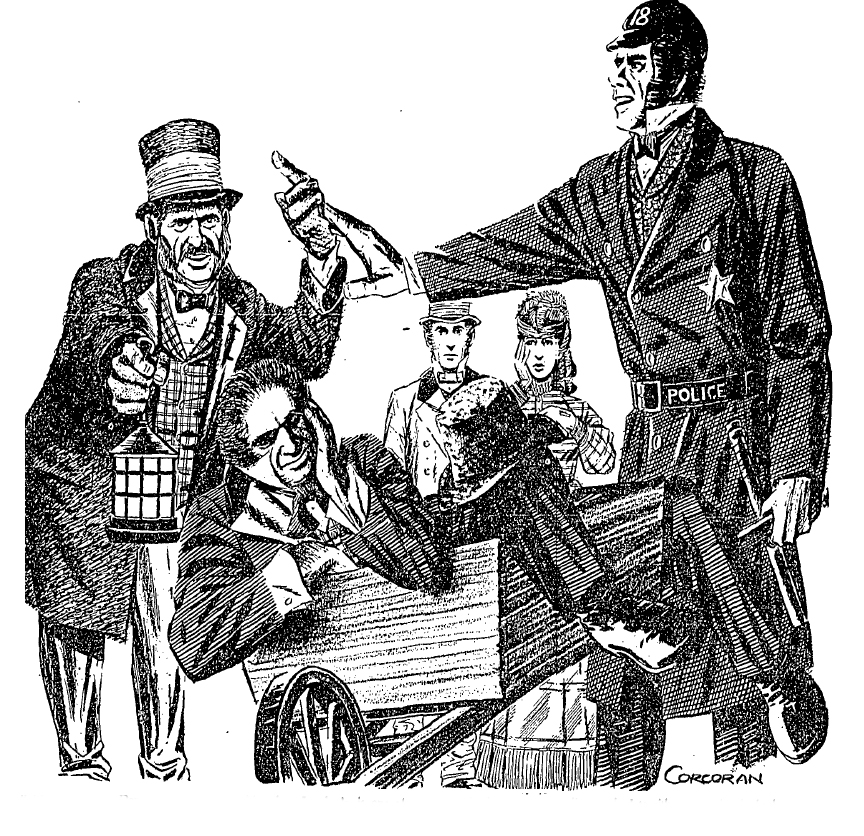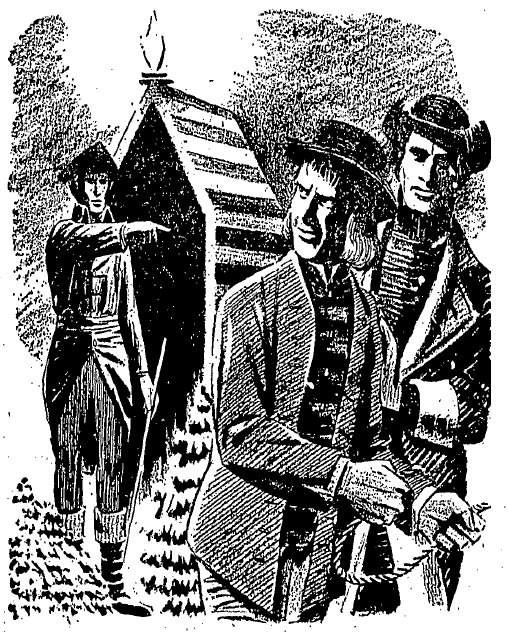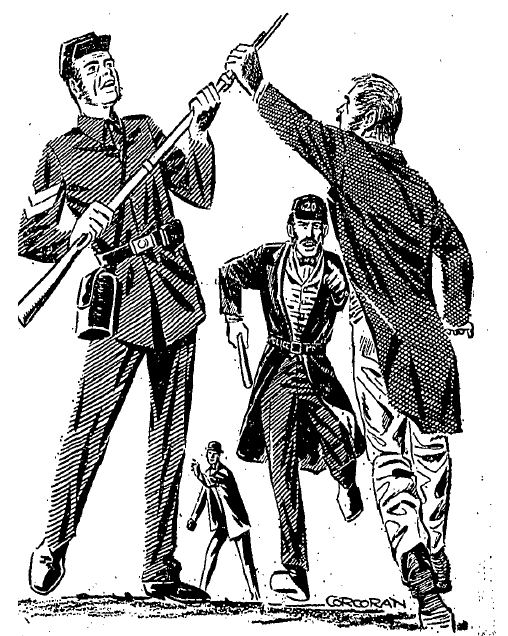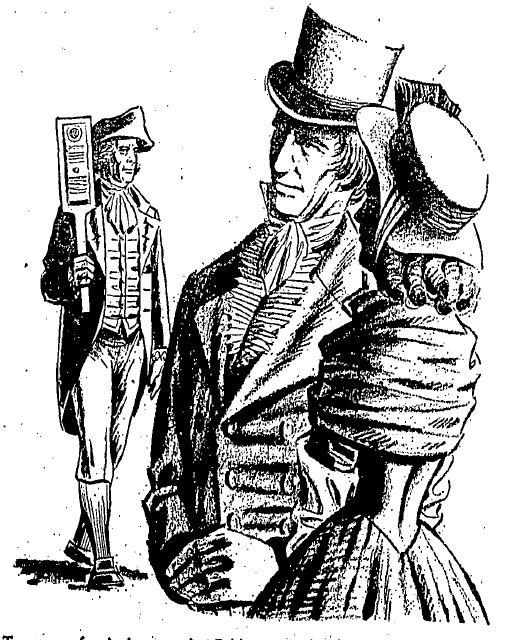172 Years
172 Years of Policing in Baltimore
1785 to 1957
45 Years Older than The London Metropolitan Police Department
The Baltimore Police Department, seventh in size in the country, is more than 200 years old and is 45 years older than "The London Metropolitan Police Department," founded by Sir Robert Peel in 1829, and it is among the earliest police forces to be systematically organized in America. (As a side note, Robert Peel's officers were known as Bobby's Cops, later Bobby Cops, or just Bobbies.) Along with those of the other eastern cities, Baltimore has done its share of evolving into today’s accepted police methods. The commonly accepted date for the beginning of Baltimore's department is 1784. It was then that the old corps of unpaid citizen to night watchman, governed by the most casual of regulations, was replaced by the paid watchmen who were required to do their duties of courting to defined rules. It was the start of a long and tumultuous career for Baltimore’s Police Department. Crime in the thriving young seaport was always a few steps ahead of the police, so many of the criminals, hardened and experienced, came from the slums of big European cities as crew members of merchant ships that brought them here. The result was the successive reorganizations of the department over many years. The reorganization door often the result of town meetings was appointed committees to affect their wishes. So in a larger sense, it may be said that the citizens of Baltimore not only supported its police but took a hand in regulating and expanding them. For in those days there were no experts in police efficiency. It would be years later when Bobby Kennedy would say something that Baltimore proved true so many years earlier. Robert F. Kennedy said, "Every society gets the kind of criminal it deserves. What is equally true is that every community gets the kind of law enforcement it insists on." This was true when Bobby said it, it is true now, and it was true before Bobby said it, back in 1784, when the community of Baltimore insisted on more police, better police, and to get it, they supported their police. - Perhaps the greatest school in error for the learning policeman in Baltimore was the first ¾ of the last century. It was a time of riding gangs, which gave the city the deserved reputation of "Mob Town." And in the more refined world of crime, forgers, safe crackers and other thieves, often working with cunning and boldness ordering genius, got away with some big hauls, leaving the police dazed and confused as to what they should do.
A Dramatic Contrast
Yet in those years the department had its hero detectives, clever men pushed to extraordinary efforts by the free-footing criminals around them. Even then, they traced criminals to various parts of the country and to Europe. And they caught European absconders hiding in Baltimore. In some ways it was an epic record for the police, as well as for the more slick-witted criminals. Those days when detective methods and police organizations were of evolving, were in rather dramatic contrast to the pre-Revolutionary citizen-night watchman who slogged through the muddy streets, calling the time every fifteen minutes.
On cold winter nights, the watchman could take time out to warm up in their little, flimsy, sentry-like boxes with whale oil lamps burning dimly on top of them. That is, if the town rowdies had not kept them over and rolled them in the mud, as they sometimes did.
These citizen-policemen, more absorbed in their private business than in the task immediately at hand, did not realize that their calling the hour notified thieves as to their whereabouts, thus enabling them to gauge the moment of their crimes accordingly. The custom was discontinued many years later.
Pattern of Commands
This first watch was organized in 1775 as a result of the first town meeting for such a purpose. In its organization, one can see the first of mergers of a pattern of commands in the Baltimore Police Department. The town was divided into five districts with a captain at the head of each.
Needless to say, the watch proved ineffective since the law breakers were more enterprising than the law enforcers. And it was reported that their most memorable performance was notification, by their cries, that the Cornwallis had been defeated at Yorktown in 1781.
So, after nine years of haphazard policing, Baltimore Town decided in 1784, as previously noted, to have a paid watch, where the watchmen could be fired or otherwise penalized for neglect of duty. And they wanted street lighting as a further crime deterrent. Both the lights and the paid watch were authorized by the State Legislature in that year.
In addition to the captains, the new watch includes a number of constables. Among their duties was supervision of the watchmen. Forerunners of more recent Sergeants. They made the rounds of the beats regularly, seeing that each man was at his post.
Debauchery Subsides
The new watchman proved effective for the time. The "Cursing, Swearing, Debauchery, and Drunkenness" long complained of subsided, and only fourteen watchmen were needed at night. But crime picked up again in 1792, and there were complaints about the management of the watch force by the town commissioners (at the time there was a panel of police commissioners ranging from three to four). A year later, the Legislature took its management from the commissioners and put it in the hands of the justice of the court of Oyer and Terminer, criminal justice.
It was the first instance of taking Baltimore’s police from direct municipal administration. In the up’s and downs of the department, it occurred several times later and culminated in the legislative act of 1860, which made the department a state agency. The idea, of course, was to minimize the possibility of the department being made a political football.
In the recognition of 1793, the police took another hitch toward the bigger and better. There was not enough money to pay for more men, so a tax not to exceed seven shillings and six pence was put on every dog in town—to help foot the bill. It was the earliest instance of a dog tax in Baltimore. And the justices of Oyer and Terminer inaugurated another practice. They appointed justices to dispose of cases in the station houses—forerunners of today's police magistrates.
Lighted By Oil Lamps
By the time Baltimore was incorporated in 1796, it had a watch force of five captains and 45 privates. And by then it was a dimly-lighted little city with three hundred five smoky whale-oil lamps burning every night in its alleys and streets.
Two years later, Baltimore made the first uncertain steps toward creating a chief of police, or marshal, as he was later called. A high constable was appointed, and it was his duty to tour the city frequently, bearing a mace, the badge of his authority, and to report on law-breaking of whatever nature.
By the turn of the century, Baltimore had again become an "unmanageable" riotous city. It was now a bustling community of 31,514 people, and one historian remarks naively that it was "a rendezvous of a number of evil characters."
More town meetings were held in 1801 and 1810 to reorganize and enlarge the watch force. In the latter years, the force was increased to 270 men. 16 years later, the police lieutenant came into the Baltimore scene. Two were appointed for the Eastern District, four for the Middle (Central), and two for the Western District.
A corps of 12 other lieutenants was setup and charged with city-wide law enforcement. About this time, watchmen were paid $1 a day and the record indicates they got extra pay for attending court
First Detective Squad
The big leap from old to new in the department came in 1857, when the old watch system was abolished and the force became one of policemen, as we call them today, with sergeants, lieutenants, and captains, and the title of high constable went the way of watchmen. The force was headed by a marshal and deputy marshal. The first squad of detectives was appointed by the mayor, for by this time the city’s chief executive again controlled the force. There were five in the first squad, and they wore civilian clothes. Patrolmen were compelled to wear uniforms both on and off duty. In winter, the uniform was a black cap with the policemen’s number on it, a dark blue overcoat, and trousers with a patent leather belt and the word police printed on it. Summer uniforms were the same, minus the overcoat; policemen were required to wear standing collars. The badge of their authority was a star three inches high, worked in white, worsted on the left breast of their coat. The star was sewn on to avoid all chances of a policeman being without his badge. In the old days, you may sometimes leave them home. It gave thugs the opportunity of assaulting them in and then pleading that they did know their victim was a policeman. After this big reorganization, policemen wore their clubs hanging from their belts much as they do now. They carried pistols only when their was a need for them.
Pension Plan Evolved
Police salaries in those days—about 100 years ago—are among the curiosities of history. The marshal received $1500 a year; the captains will pay $13.00 a week; lieutenant $11.50 a week; sergeants $10.50; policemen and detectives $10.00; and then turnkeys at the station houses made $7.00 a week. And all paid for their own uniform.
In this era, the police pension fund began to evolve. The original fund was made up of gratuities given to policemen, who were required by law to turn them in. Money came from other sources, such as fines, other penalties, and the sale of unclaimed property lost or stolen. At first, the fund provided benefits for men killed or injured in the line of duty and for awards to those cited for gallantry. In the late 1850s, the "Know Nothing Party" became powerful in Baltimore. It had a strong religious bias and was opposed to all immigration. The party organized several political clubs, and their tactic was violence rather than persuasion. Elections of that period were signals for action by the mobs, and riots were the rule. At first, the newly organized police did their best. But gradually became infected with the Know Nothing ideology. So instead of battling the riot instigators, they co-cooperated through negligence. In the records, Know Nothing stands out prominently for disorder. Still, there were other sources of trouble. The old volunteer fire companies fought each other in knock-down drag-out battles. And many "evil characters" were still in the city. Chief among them were the police magistrates, deeply involved in politics, having intimate connections with thugs and ruffians. A vivid picture of the times is given by Marshal Herring, years after he left office: “The magistrates were elected by the wards at the time." Many of the toughest elements in society belonged to the fire companies and the men seeking magisterial office depending on that class for election. When the police arrested one of these men, he would be released on "straw bail," and within 24 hours he would have the same man again to lockup.
We often arrested 40 or 50 persons in a night; every one of them was released the next morning by the magistrates.
I was many times out on Baltimore streets with 40 or 50 men all night, just to keep the firemen from fighting.
Never Brought To Trial
On of the worst characters in Baltimore was arrested, his name was Bud Coulston. Bud was arrested for firing two shots in the daytime into the public school at Fayette Holliday streets, and took him before the magistrate who immediately released him one stroll or fictitious bail. Then there were hundreds of each cases. Captain Brown’s men of such cases. Captain Brown’s men of the western district arrested one man, in a little more than a year, 147 times. But he was never brought before the court for trial. Much has been said about the police and elections days, why the officers made arrests at the polls, took their prisoners to jail and within a few hours would find them back to the polling places.” Again as noted above, Baltimore was aroused and in 1860 the police department, having been blamed for the conditions, was made a state agency, and that has been a status of are sense. Its management was given to a board of three police commissioners. Who were elected by the state legislator. The three commissioner system continued until 1920 when one commissioner, to be appointed by the governor’s, was substituted for it. So basically we went from a three commissioners system to a one commissioners system.
The first months of the civil war or a time sore trial for Baltimore’s police, in a border city of strong Southern sympathy they had the tough job of protecting union soldiers passing through, won their way to the southern battlefields, the soldiers, unlike other passengers were carried slowly to the streets in the course cars. The billing crowds, cheering Jefferson Davis, saw the wrapper tape to attack and they did show in the true riding tradition of all Baltimore. They threw stones and other missiles at the cars. But on April 19, 1861 the crowds attempted to stop the soldier’s movement and it was a fateful day for the Baltimore police department. Tamales blocked the track near gay and Pratt streets by piling on it a dray load of sand, a pile of cobble stones and some light anchors.
Police Heads Imprisoned
220 union soldiers got out and attempted to march to Camden station. It was the signal for the onslaught. The rioters attempted to snatch soldier’s muskets and the ensuing fight. Police went wrong pistols, threatening to suit tried to protect the union soldiers, but to little avail. Four soldiers were killed, 36 wounded. 12 citizens were killed. Some weeks later General Banks in command of the union forces in Baltimore, decide to take over the police department. He arrested Marshal Kane and confined him at fort McHenry. In the later he arrested the three commissioners. They were sent to prison and for one Allston harbor; there they were held for more than a year. Commissioners of the police and sympathy with the union were named in the department went one the Federal payroll. In the posts war you’re the department began innovations that have since become the trademarks of American police everywhere. Among other things the patrol wagon, the helmet and the police telegraph box were introduced. Up to about 1885 again necessary for policemen to Carey very drunk prisoners on their backs to the station house that is when they commandeer a wheelbarrow. Chicago was the first American City to employ patrols and Baltimore is believed to be the second. It came about this way, one day deputy-marshal Frey was reading an illustrated magazine and a gymnasium of central station and saw how effective wagons were in Chicago. He brought the idea before the board of police commissioners. They were mildly interested. He called the board’s attention to the matter again some weeks later. They had forgotten about it but promised to look into it.
Telegraph Box System
And this time they did. And after the legislation failed to act, the board took matters into its own hands. It sent one of its members and the then Marshal Gray to Chicago to see how the new-fangled patrols worked. They “were charmed” an old record states. And while there they saw Chicago’s new police telegraph box system. (Known as the callbox) Result was both facilities were in Baltimore by the fall of 1885.
The Police Helmet
Already worn in other cities, was made of a rule in Baltimore and 1886. It was introduced by Commissioner Alford J. Carr. It took the place of the derby formerly worn by policemen. Commissioner Carr specified that the helmet the black in the winter and pearl gray and summer. The helmet at that time was significant of rank, I only patrolman and sergeants and wore it. The marshal and is deputy and captains and lieutenants were. It was said at the time that the hygienic the fact of the home and was excellent, giving the policemen’s had a chance to secure proper ventilation.
In early days policemen were really watchmen. On cold nights they would warm themselves in century like boxes atop which oil lamps burned dimly. Two years after its incorporation Baltimore appointed a police chief, and a high constable who toured the city caring a mace, known as his badge of office. A mace is a pole type weapon with a blunt or bladed striking end. April 19, 1861 was a fateful day for Baltimore police, who had to attack riding citizens to protect union soldiers passing south through the city. Baltimore’s police department, is 45 years older than London’s, is one of the country’s first. Changes were slow to come about, and for the first hundred years as so, policeman had to either carry drunks back to the station houses or to commandeer wheelbarrows for the purpose, which they often did.
![]()
POLICE INFORMATION
Copies of: Your Baltimore Police Department Class Photo, Pictures of our Officers, Vehicles, Equipment, Newspaper Articles relating to our department and or officers, Old Departmental Newsletters, Lookouts, Wanted Posters, and or Brochures. Information on Deceased Officers and anything that may help Preserve the History and Proud Traditions of this agency. Please contact Retired Detective Kenny Driscoll.

NOTICE
How to Dispose of Old Police Items
If you come into possession of Police items from an Estate or Death of a Police Officer Family Member and do not know how to properly dispose of these items please contact: Retired Detective Ken Driscoll - Please dispose of POLICE Items: Badges, Guns, Uniforms, and documents properly so they won’t be used improperly.
Please contact Det. Ret. Kenny Driscoll if you have any pictures of you or your family members and wish them remembered here on this tribute site to Honor the fine men and women who have served with Honor and Distinction at the Baltimore Police Department.
Anyone with information, photographs, memorabilia, or other "Baltimore City Police" items can contact Ret. Det. Kenny Driscoll at
Copyright © 2002 Baltimore City Police History - Ret Det Kenny Driscoll









